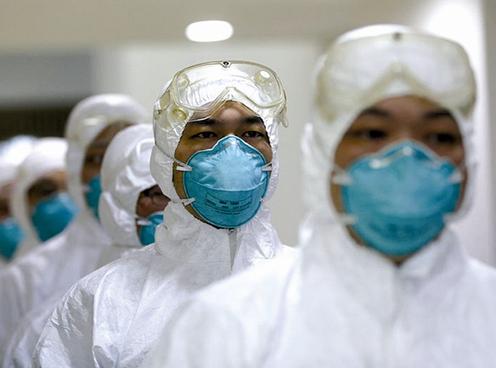 After a short period of more than two months, the Chinese government has begun to redeploy and strictly monitor people infected with H7N9 bird flu. Among them, the Ministry of Agriculture announced on the 7th the second half of the animal H7N9 bird flu detection program and decided to conduct a centralized monitoring of the H7N9 bird flu virus in September.
After a short period of more than two months, the Chinese government has begun to redeploy and strictly monitor people infected with H7N9 bird flu. Among them, the Ministry of Agriculture announced on the 7th the second half of the animal H7N9 bird flu detection program and decided to conduct a centralized monitoring of the H7N9 bird flu virus in September. Studies have shown that H7N9 bird flu virus activity is seasonal, and high temperatures in summer can significantly weaken it.
According to government sources, with the advent of the fall, China's health and disease control system will soon make new plans for monitoring and control deployment.
In March of this year, Shanghai was the first time in the world that people had been infected with H7N9 bird flu. Later, outbreaks occurred in 10 provinces and cities in the Chinese mainland. More than 130 confirmed cases were reported, including nearly 40 deaths.
At the end of May, as the confirmed cases of human infection with H7N9 avian influenza continued to stop growing, the influenza epidemic in the mainland of China completely terminated the emergency responses to the influenza epidemic, and related prevention and control work was transferred to normal management.
According to Feng Zijian, director of the Health Emergency Center of the Chinese Center for Disease Control and Prevention, in addition to seasonal changes and rising temperatures, the Chinese government’s timely and effective prevention and control measures are key factors.
However, some of the latest research results have warned that with the arrival of the fall, China should not lightly rekindle the possibility of human infection with the H7N9 bird flu epidemic.
An article published by the research team of the National Bird Flu Reference Laboratory of China last month pointed out that after the H7N9 virus invaded the human body, its ability to transmit virulence and levels to mammals was significantly enhanced, thus revealing the existence of the H7N9 virus. The greater the risk of epidemic.
Chen Hualan’s research team calls for global prevention and control of the H7N9 virus. It should not be taken lightly. The H7N9 virus mutation in the natural world, especially in the population, should be closely monitored.
The latest research results of Bao Changjun, deputy director of the Jiangsu Provincial Center for Disease Control and Prevention of acute infectious diseases, showed the evidence that the H7N9 virus can spread from person to person. The object of study and analysis was a case of a family cluster of patients from Wuxi, Jiangsu Province.
"But the evidence also shows that human transmission is limited, and it will only happen under certain special conditions." Bao Changjun said: "The H7N9 virus has not yet gained the ability to continue effective communication between people. Therefore, the public need not panic. â€
More than 30% of human deaths from the H7N9 bird flu epidemic are higher than the 21% mortality rate of the H1N1 epidemic that occurred between 2009 and 2010, but far below the 60% death rate from the H5N1 epidemic that occurred in 2003.
Li Lanjuan, academician of the Chinese Academy of Engineering and director of the State Key Laboratory of Infectious Diseases Diagnosis and Treatment at Shanghai Jiaotong University, said that as long as the source of infection can be effectively monitored and controlled, the route of transmission can be cut off to a great extent, and the population’s immunity can be improved, it can control the widespread occurrence of human infection with the H7N9 bird flu epidemic. And proliferation.
"Human infection with H7N9 bird flu is still preventable and controllable," she said.
Ig M Antibody,Mycoplasma Igg,Antigen And Antibody,Igg And Igm
Guangdong Hecin Scientific, Inc. , https://www.hecinscientific.com